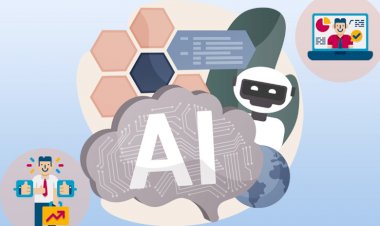Building Trust Systems with Explainable Artificial Intelligence

Healthcare, finance, transportation, and entertainment are just a few of the areas in which artificial intelligence (AI) is quickly changing our lives. But as AI spreads, there are more and more worries about how many of these systems lack accountability and transparency. This has given rise to "explainable AI," which aims to increase the transparency and interpretability of AI systems in order to foster trust and confidence among users and stakeholders.
AI systems are referred to as being "explainable" if they can give a human-understandable justification for their decisions and results. This is especially crucial in fields like healthcare, where AI is increasingly being used to help with diagnosis and treatment choices. In these situations, trusting and relying on AI systems requires that doctors and patients are aware of how the AI arrived at its recommendations.
The complexity of many AI systems is one of the main difficulties in developing explainable AI. It can be challenging to comprehend how a system reached a particular decision when using deep learning algorithms, which can have millions of parameters and layers. Researchers are creating new methods for interpreting and visualizing AI systems, such as heatmaps and decision trees, that enable users to see how the system arrived at its conclusions, in order to address this problem.
The need to strike a balance between performance, accuracy, and explainability presents another difficulty. In some cases, even the most interpretable AI systems may not be the most accurate. For instance, even a deep learning model that effectively predicts the course of a disease using genomic data may be challenging to understand. In order to balance explainability with accuracy and performance, researchers are working to create new approaches. One such approach is to create hybrid models that combine interpretable and non-interpretable AI components.
Additionally, explainable AI has social and ethical ramifications. Consider the use of AI for decision-making in the hiring, lending, and criminal justice processes, where biases and discrimination may be exacerbated by AI systems. By ensuring accountability and transparency in AI decision-making, explainable AI can aid in addressing these worries.
It's critical to adopt a proactive and open explanation strategy if you want to increase user confidence in AI systems. This entails including users and stakeholders in the development process and offering concise and understandable justifications for how AI makes decisions. Additionally, it calls for a dedication to the moral and responsible use of AI, as well as steps to address bias and discrimination in AI systems.
In conclusion, explainable AI is a significant advancement in the field of artificial intelligence because it aims to make AI systems more transparent and understandable in order to foster a sense of trust and confidence among users and stakeholders. Building explainable AI has its challenges, including the complexity of many AI systems and the need to strike a balance between explainability, accuracy, and performance, but the potential rewards could be enormous. We can develop AI systems that are more dependable, responsible, and ethical, and that can assist in addressing some of the most urgent issues facing society today, by adopting a proactive and open approach to explainability.
An Analysis by Pooyan Ghamari, Swiss Economist with Expertise in the Digital World

 content-team
content-team 
















